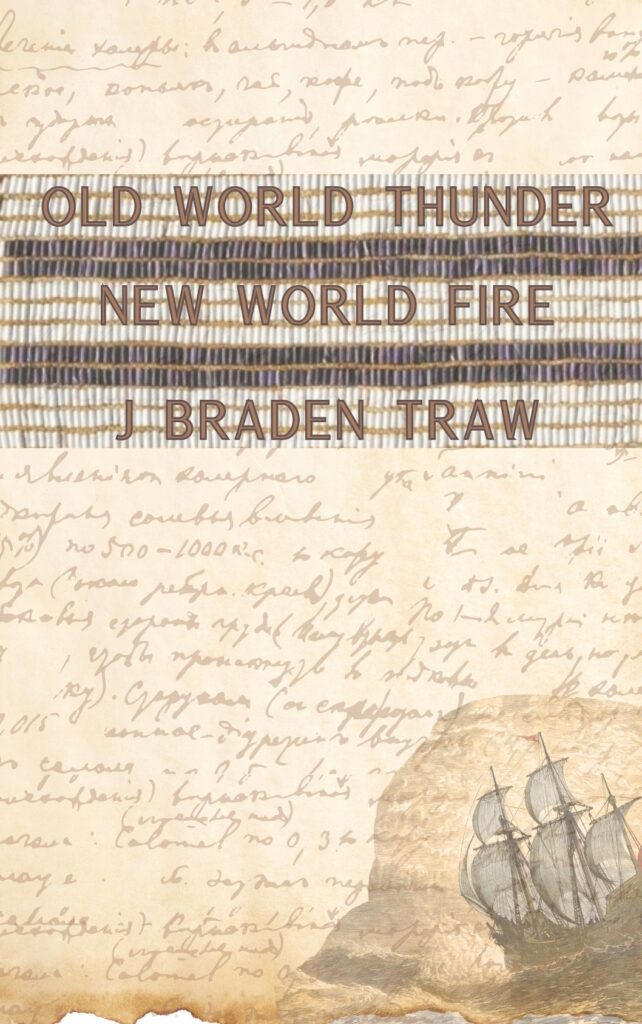
Discover a World of Trade, Diplomacy, and Deceit
Old World Thunder, New World Fire is a historical fiction serial set in North America during the French and Indian Wars. Beginning in the 1680s, the serial spans decades of history and dozens of different protagonists and points of view from the major political powers of the time.
The Players
The serial delves into the intricate and complex political and military relationships between the five major players during the time: the French and European colonies, as strange pseudo-proxies for their monarchs back in Europe, as well as the three major tribal confederacies at the time: the Council of Three Fires, the Five Nations of the Iroquois (Haudenosaunee), and the Wabanaki Confederacy.
The Dominion of New England
A brand-new government formed just the year before the serial starts, the Dominion of New England is King James II’s attempt to exert a more unified control over the English colonies. Governor Edmund Andros of New York rules over all these colonies, attempting to impose the influence of the Crown, which has been met with resistance from the colonists who came to this country to escape the Crown in the first place.
New France
France’s colonies in North America are more sparse and far less populated than England’s. Originally, France’s perspective towards the New World was primarily as a place to extract furs and other desirable commodities from, having no need to establish permanent colonies and cities there, but that perspective has been changing. King Louis XIV in particular desires a stronger presence there. They have aligned themselves with the Wabanakis and the Anishinaabeg as trading partners and allies against their common enemies: the English and the Iroquois.
The Five Nations of the Iroquois (Haudenosaunee)
The most powerful and feared of the three Indian confederacies, the Iroquois are made up of five large tribes: the Seneca, Cayuga, Onondaga, Oneida, and Mohawk. By uniting their territories in modern-day New York under one banner, they have become a force to be reckoned with. The Iroquois do not war and conquer to just gain territory and power; they conduct ‘Mourning Wars’ to replace family members that they have lost, kidnapping prisoners of war and assimilating them into their tribes as replacement. The more neighboring tribesmen they assimilate, however the more their cultural and political identity becomes muddled, as many of the assimilated try to retain the values and culture of the tribe they were born in.
The Wabanaki Confederacy
Originally just a series of like-minded tribes in modern-day Maine and Canada, the Wabanakis are changing in response to the aggression at their borders from both the Iroquois and the English colonists. During the early chapters of the serial, the leaders of all the Wabanaki tribes (Mi’kmaq, Wolastoqiyik, Passamaquoddy, Penobscot, Eastern and Western Abenaki) will meet to form a unified Confederacy. Despite this unification, there are many divisions among the Confederacy’s many tribes: who to ally with, who to declare enemies. Everyone has a different answer, and for a nation so recently formed, nothing is certain.
The Council of Three Fires (Anishinaabe)
Unlike the Haudenosaunee and the newly-formed Wabanaki Confederacy, the Anishinaabeg (plural of the singular Anishinaabe) do not have a unified or centralized government. The three tribes treat each other as brothers, equal under their united banner: Ojibwe, Odawa, Potawatomi. However, that still may change, especially after witnessing the unification of the Wabanakis. The Anishinaabeg live in the Great Lakes region, and currently dominate the fur trade with the French.